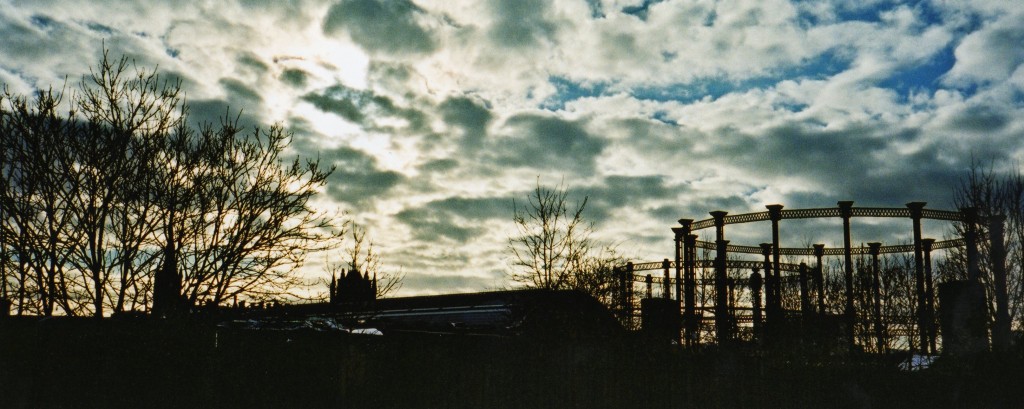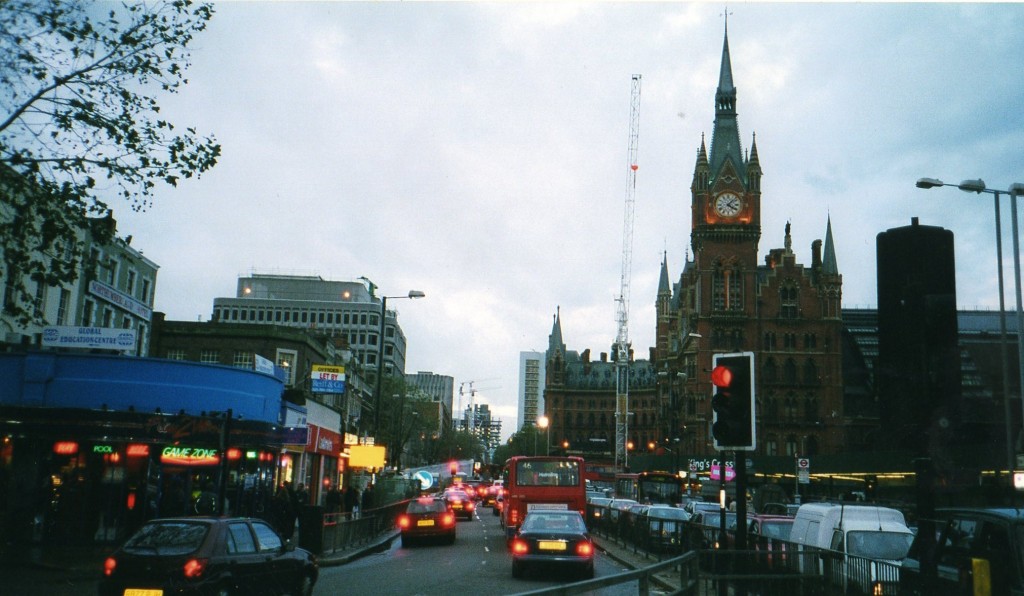
Two mothers were having a noisy argument about something. Their kids attacked taut black bin-liners, before jumping on a discarded sofa, which clung to the kerb. One mother swore at them, but it was too late: the sofa had collapsed, and the bags burst to triumphant cheers, their contents swept into the traffic by the breeze. Horns beeped, voices screamed. Unruffl ed, the gang spread themselves over a brick wall.
I took a right turn at the Ethiopian restaurant on the corner; by the library, a fleet of trolleys lay upturned in the community gardens.

LOCAL ADVERTISING
“King’s Cross is like a theatre,” the owner of a caff on the Cally Road would tell me over weak black coffee. What he meant was that its cast of players – prostitutes, dealers, workmen, baffled tourists – all seemed to act out their roles against a set of ragged tenements and alleyways.
“No, it’s like a port,” an older customer next to me would insist, screwing up his face. “It’s the last place in London that feels like a port.”
He would then explain that the history of the area was marked by tides of progress and decline. “Change is inevitable,” he’d say, shrugging his shoulders. And he was right: there was a nagging sense of transience.

But at nightfall this feeling of impermanence was frozen. You could, if you chose, peer through the railings at the sprawl of work-in-progress London: a dozen skips, pregnant with debris, would be squatted on the mud, with fork-lift trucks and tractors dancing motionless around them. The orange hue of the lamps was reflected in the pools of rainwater. But nothing stirred. No cars; no music; no voices. This was central London and it was absolutely still.
And York Way’s complexion altered according to the time of day: rush hour saw a thoroughfare choked with traffic, while twilight ushered in a hesitant silence. On the weekend, clubbers would spill from nearby warehouse parties, at Bagley’s or The Cross, gesticulating wildly. But that night in 2002 the road seemed to be yawning, with only an occasional black cab shooting past, defying its stupor.
I continued up the hill on pavements littered with men-at-work signs and upturned bollards. Staring, for a moment, into the vast building site of the new terminal, at the cranes and bulldozers, I feared the future. Would our capital ever be the same again?
But then again, I thought, haven’t Londoners been saying that for centuries? In the end, only one thing’s for certain: we’re all just passing through.


